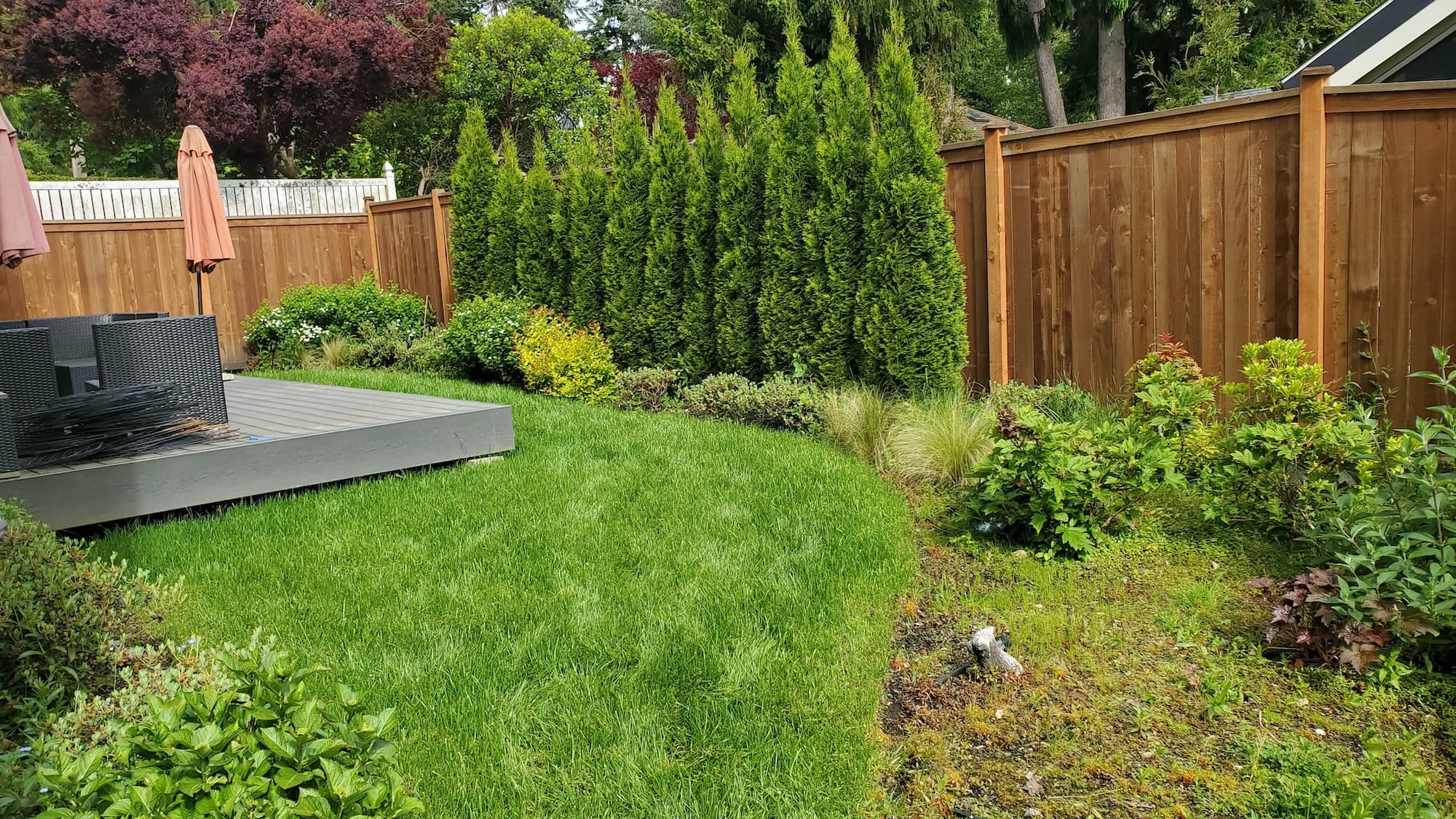West Seattle Remove weeds growing through fabric
Homeowner’s Issue
Weeds poking through landscape fabric are one of the most common complaints we hear in West Seattle. Heavy winter rains, shallow topsoil over glacial till in many neighborhoods, and compacted planting strips at the curb create pockets where seeds and rhizomes take hold. Many yards here are a mix of sun and deep shade—yards near Lincoln Park and the Alki bluff get wind and salt spray on exposed slopes, while inland lots under mature maples stay damp and mossy. That combination encourages persistent annual grasses, moss, and trailing ivy to find seams in fabric and re-establish quickly.
Drainage is a frequent culprit: where fabric sits on an uneven base or was installed without a proper mulch layer, water concentrates and organic debris builds up on top, giving weeds an easy bed to germinate. Slopes on Genesee and Admiral hills can also cause fabric to shift and tear. HOA rules and curb appeal matter here—West Seattle homes are judged by tidy beds and defined edges—so unmanaged fabric failures look sloppy and increase maintenance. Our focus is practical: stop the regrowth without chemicals, repair or replace fabric where it fails, and restore a mulch-buffed bed that actually suppresses weeds through the wet Seattle seasons.
Our Quality Service
We hand-remove weeds, inspect and repair fabric, and refresh mulch to restore functional weed suppression. We use hand tools, pry bars for stubborn roots, and biodegradable mesh where replacement is needed. For dense infestations we use sheet-mulching (cardboard + compost) and aggressive hand-extraction rather than herbicides.
Typical timeline: a standard 500–1,000 sq ft job takes 3–6 hours; fabric replacement or heavy soil work may take a full day. We schedule around weather—fall and late spring are best to minimize regrowth. We account for local soil types, slope stabilization on hills, and Seattle’s seasonal rainfall so results last longer and require fewer visits.
Benefits: safer yards (no herbicides), better curb appeal, fewer repeat visits, improved drainage, and lower long-term maintenance.
What’s Included
- Hand-pull and root removal of weeds growing through fabric.
- Full inspection of existing fabric; patch or recommend replacement where necessary.
- Remove accumulated organic debris above fabric and regrade small low spots.
- Mulch refresh (bark or composted mulch) to a recommended 2–3” depth.
- Dispose of green waste (haul-away or green-bin option).
Options / Upgrades
- Fabric replacement with biodegradable or woven landscape fabric.
- Sheet-mulch upgrade (cardboard + compost + mulch) for long-term suppression.
- Soil amendment with organic compost to reduce compaction and improve drainage.
- Planting low-maintenance natives or groundcovers to outcompete weeds.
- Haul-away vs. green-bin drop-off (you choose).
Before & After / Expectations
Expect some noise and hauling on service day—we use hand tools, rakes, and a small wheelbarrow; heavy fabric replacement may require a truck. We’ll flag access needs (gate width, parking) before arrival. Mess is contained: we bag green waste and either haul it away or leave it at the curb for City/compost pickup per your preference.
Timing: you’ll see immediate cosmetic improvement; full suppression takes a season as mulch settles and root banks are exhausted. In shady, mossy spots plan for ongoing attention—a single visit reduces weed seed and root mass, but follow-up visits the next spring or fall often finish the job.
West Seattle care tips
- Water deeply in the morning during dry spells; avoid evening watering that favors moss.
- Spring and fall are peak weed-pull windows—schedule visits then for best results.
- On slopes, use smaller mulch pieces and pins or edging to keep material from washing out.
- Increase sunlight to problem beds (prune low limbs) to reduce moss and ivy pressure.
FAQs (3–5)
- Q: Do you use herbicides?
A: No. We use manual removal, sheet-mulch, and organic soil work only. - Q: How long before weeds stop returning?
A: You’ll see big improvement within one season; most properties need a follow-up in 6–12 months. - Q: Can you replace torn fabric?
A: Yes. We patch small tears and replace full sections when fabric is past useful life. - Q: What if my yard is on a slope?
A: We stabilize beds with proper grading, smaller mulch pieces, and mechanical anchors where needed. - Q: Can you haul the debris?
A: Yes — choose haul-away or curb green-bin drop-off.
Call to Action
If you’re in West Seattle and done with weeds through fabric, book a free estimate. We schedule local jobs quickly and tailor the work to Alki, Lincoln Park, Admiral, and surrounding blocks. Practical, sustainable fixes—no guessing, no herbicides.
Email: neatandtidyseattle@gmail.com
Phone: 206-538-9344
Mon–Sun: 9am–6pm
Licensed • Bonded • Insured










